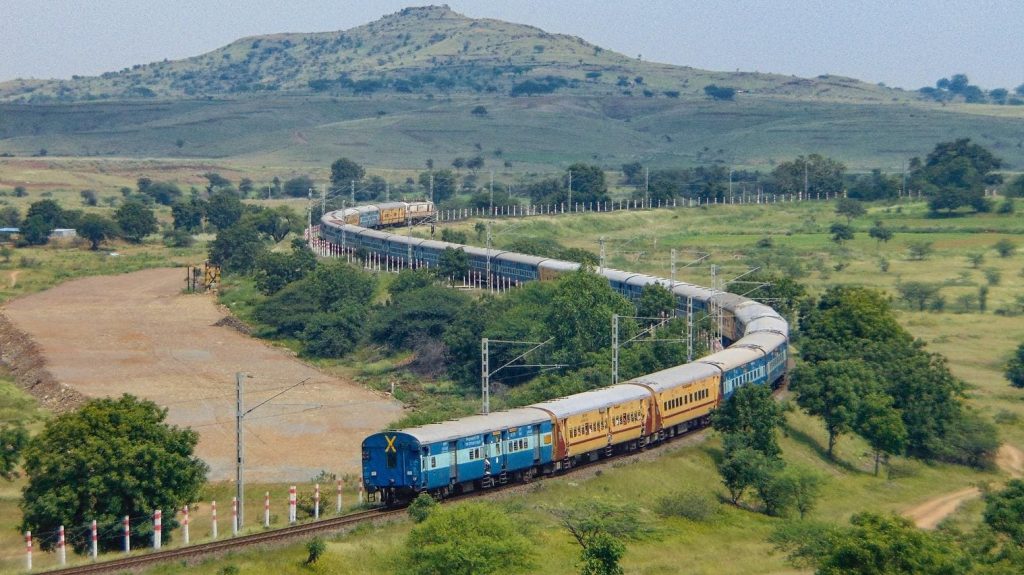North America has a railroad problem that the rest of the world doesn’t have. As a result, a lot of North Americans think it’s too expensive to electrify that mode of transportation. As we explore electrifying everything everywhere all at once as a key wedge in solving global warming it’s time to debunk that notion.
Why am I singling out North America and North Americans? Because the Americas are singular in their lack of ability and willingness to do what the rest of the world has already mostly done.
India has electrified above 85% of its heavy rail and is aiming for 100% by 2025. China is at 72% and building more electrified, high-speed freight and passenger rail rapidly. Europe is at 60% and climbing. The entirety of the storied Trans-Siberian Railroad, all 9,300 kilometers of it, is electrified.
There’s more high-speed rail in Africa and Indonesia than in North America and yes, it’s electrified.
This is absolutely nothing new. The first electric railroad was in operation over 100 years ago. The technology is bog simple. Trolley wires overhead. Electricity flowing into the wires from the grid. An extensible pantograph reaching up from the locomotive to brush against the wires. Electricity flowing through the pantograph into the locomotive. Electric motors on the wheels of the locomotive using the electricity.
Trains are just like every other form of transportation. Using electricity directly is much more efficient and cheaper than burning fossil fuels. Almost all locomotives that still burn diesel generate electricity with it to drive electric motors on the wheels. The diesel generators turn 20% to 25% of the energy in the diesel into forward motion and the rest is just waste heat.
Electricity from the grid, on the other hand, regardless of how it’s generated, turns into forward motion with very high efficiency. Well-to-wheel, electric locomotives are much more efficient even when operating on electricity generated with coal or natural gas. When they are powered by renewable electricity, they are double the efficiency or more.
There are about 100,000 freight locomotives operating globally. Converting them with pantographs to power the electric motors is cheap.
Is it hard to electrify rail that isn’t already electrified? Well, it used to be harder and it is definitely possible to do it wrong and hence have it be more expensive. The American Association of Railroads and the US Department of Transportation claim it’s hard because they insist that the only way to do it is the wrong way.
To be scrupulously fair, the UK is actually doing it the wrong way at great expense, so it’s reasonable at first blush to make this mistake. But it remains a mistake.
What’s the problem? Bridges and tunnels designed for diesel-electric locomotives. Putting overhead trolley wires across bridges or through tunnels would mean rebuilding the bridges and heightening the tunnels. That’s expensive. Per David Cebon, founder and director of the Cambridge-based Centre for Sustainable Road Freight, the UK is spending two-thirds of its expense putting wires over bridges and through tunnels.
Is there an answer to this in 2023? Yes, there is. Batteries. They are already packed in shipping containers for grid storage, behind the meter storage and to power container ships along the Yangtze. It’s not hard to put batteries on trains. By definition trains haul vastly heavier things. The grades they have to go up are relatively slight and bridges and tunnels are much shorter than rail lengths along the ground under the open sky.
There’s another bit to this. Regenerative braking. When a Tesla slows down, its electric motors generate electricity that returns to the battery. When a diesel-electric locomotive brakes, its electric motors generate electricity too, but it’s shunted to big heating coils in the roof to get rid of it. When an electric train brakes, the electricity that’s generated is put back into the overhead wires or into the battery, increasing efficiency.
Is this cheaper than alternatives like hydrogen locomotives? It certainly is. The German state of Baden-Württemberg did a study and found that any route that could be directly electrified had by far the lowest total cost of ownership, that using batteries for the hard bits was barely more expensive and that hydrogen was three times the expense. Meanwhile, the nearby state of Lower Saxony didn’t do the same basic math, bought several small passenger hydrogen trains and recently abandoned them because they were too expensive to operate.
Why is this global majority solution that’s very technically robust and has been in use for decades rejected by US rail? Is it for any of the reasons that they claim? No. The USA has a bloated rail network. They run half the tonnage of freight over the average mile of rail as other major geographies. That’s half the revenue per mile of track. That’s half the money to spend on track maintenance, never mind significant upgrades.
Over 700 corporations own pieces of the USA’s rail network. The country has twice as much rail as it needs. The obvious strategy is to shut down barely used tracks, about half of them, and wire the rest with rechargeable batteries in containers swung on and off trains in transshipment terminals for the tunnels and bridges.
That’s going to happen in the coming decades regardless. Four million rail cars full of coal and 70,000 rail cars full of oil are going to disappear from tracks. All North American road freight is going to electrify, even as executives of the trucking association testify to Congress that they couldn’t possibly do that. Electrified trucking will be cheaper because batteries with electricity have lower operating costs so prices will go down and be more competitive with rail. Then autonomous trucking will drive more costs out of road freight.
The North American rail industry will have disappearing bulk loads and diminishing container loads as road freight eats their market share. Expect bankruptcies across rail in the coming couple of decades, along with more derailments due to lack of maintenance.
Then the big rail companies will be begging the government to save them with electrification and it will. After all, rail that’s more expensive and more polluting than the rest of the world is a significant competitive disadvantage.
It will take a while for North America to catch up to where the world is today, and by then the rest of the world will have been operating fully electrified rail for two or three decades. But within spitting distance of 2050, rail will be electrified everywhere all at once.
Read the full article here










